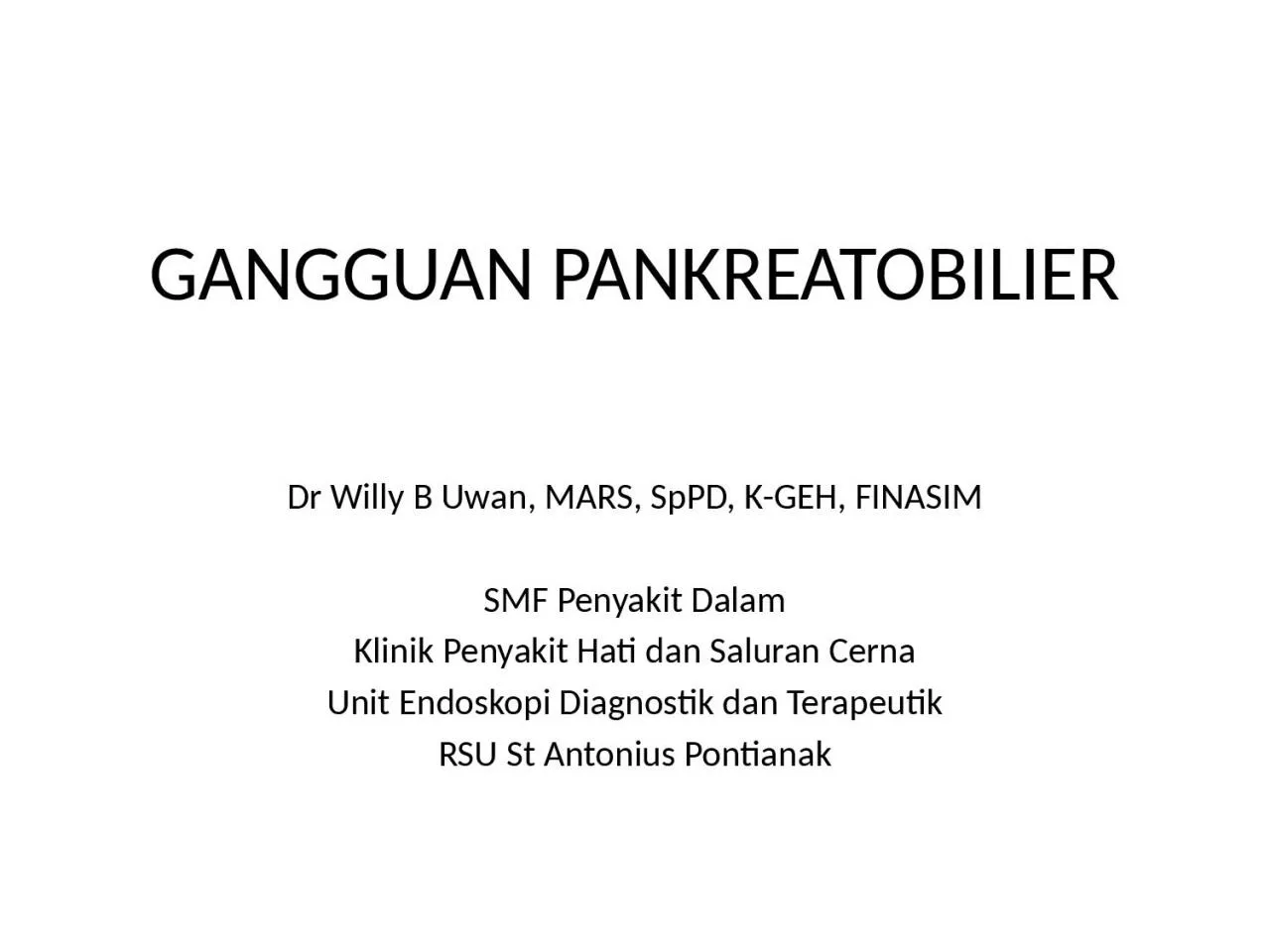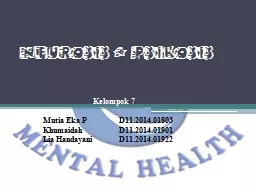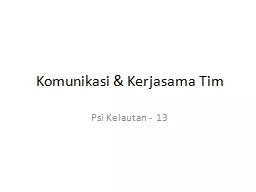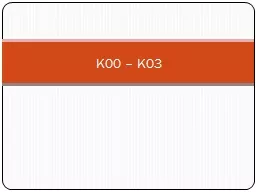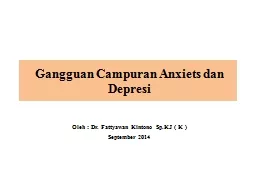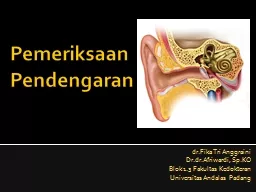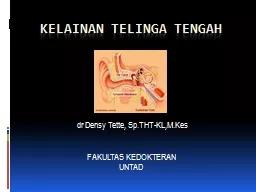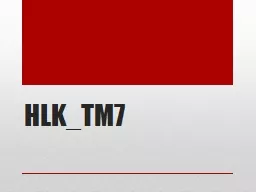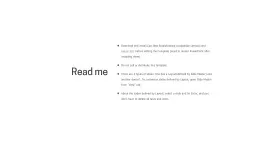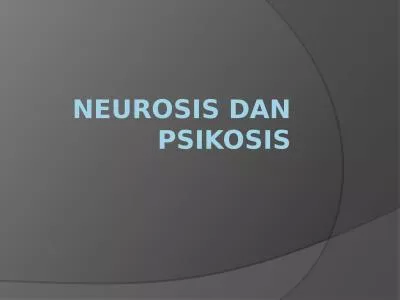PPT-GANGGUAN PANKREATOBILIER
Author : erica | Published Date : 2023-12-30
Dr Willy B Uwan MARS SpPD KGEH FINASIM SMF Penyakit Dalam Klinik Penyakit Hati dan Saluran Cerna Unit Endoskopi Diagnostik dan Terapeutik RSU St Antonius Pontianak
Presentation Embed Code
Download Presentation
Download Presentation The PPT/PDF document "GANGGUAN PANKREATOBILIER" is the property of its rightful owner. Permission is granted to download and print the materials on this website for personal, non-commercial use only, and to display it on your personal computer provided you do not modify the materials and that you retain all copyright notices contained in the materials. By downloading content from our website, you accept the terms of this agreement.
GANGGUAN PANKREATOBILIER: Transcript
Download Rules Of Document
"GANGGUAN PANKREATOBILIER"The content belongs to its owner. You may download and print it for personal use, without modification, and keep all copyright notices. By downloading, you agree to these terms.
Related Documents

